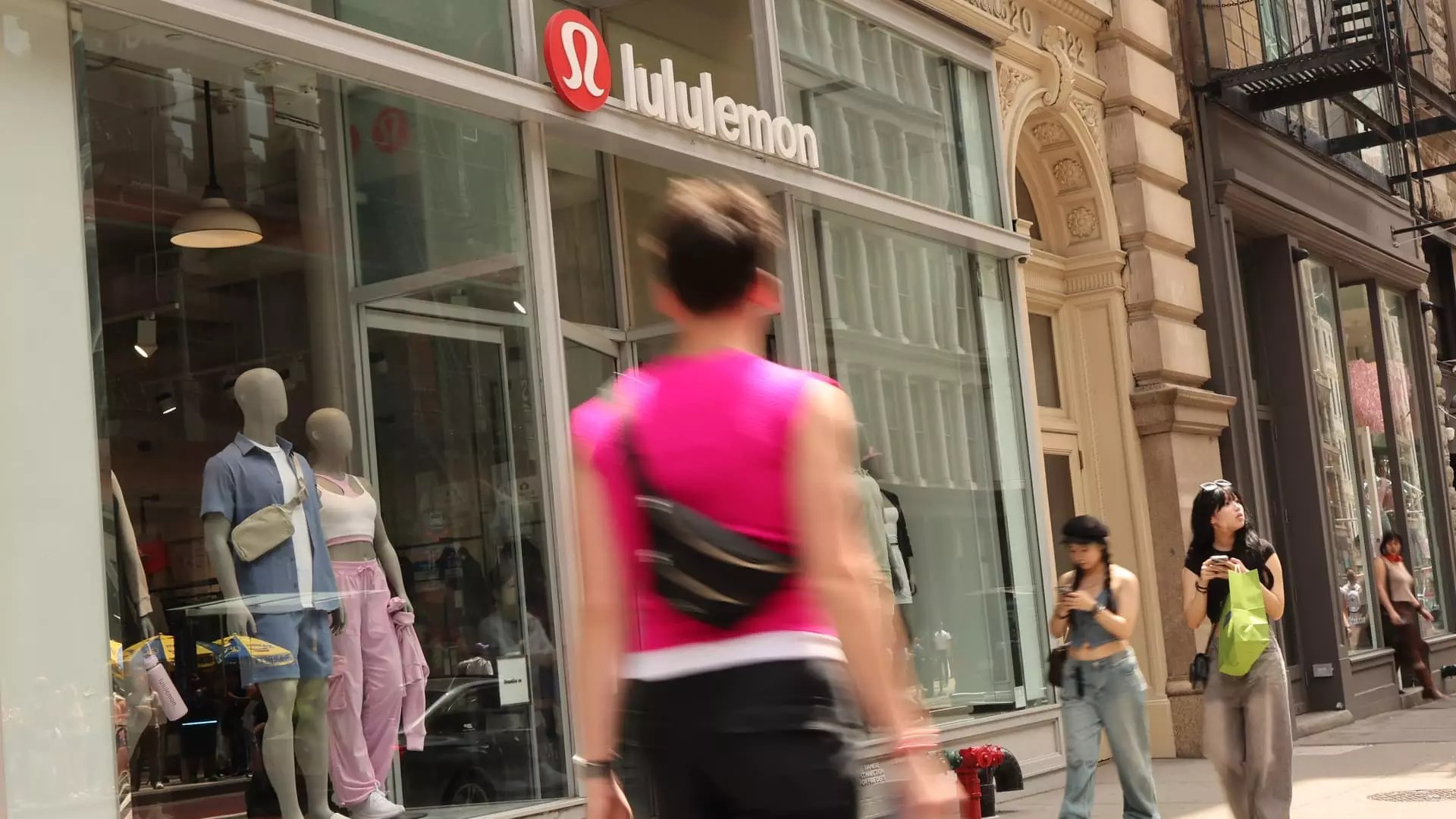Lululemon Athletica, the athletic apparel giant celebrated for its pioneering role in the athleisure market, has found itself navigating a turbulent economic landscape. Recently, the company reported first-quarter earnings that, while surpassing initial expectations, led to an unexpected nosedive in share value of nearly 20% post-announcement. This decline is not merely a blip; it reflects a broader apprehension about the company’s financial stability amidst a “dynamic macroenvironment.” As a consumer, investor, or simply an observer of the market, it’s crucial to dissect the factors contributing to this dramatic scene.
Lululemon’s CEO, Calvin McDonald, recently expressed a commitment to leveraging the company’s solid financial footing while aiming for growth. However, this sentiment belies the reality. In an era marked by fluctuating tariff policies and economic uncertainty, such bravado rings hollow and may mislead stakeholders into a false sense of security. For a brand built on promoting a lifestyle of wellness and performance, Lululemon finds itself in a precarious position, balancing growth aspirations against grim economic forecasts.
The Numbers Don’t Lie: Discrepancies in Expectations
On the surface, Lululemon’s financial metrics for the fiscal first quarter appeared favorable: earnings per share (EPS) reached $2.60, slightly exceeding analysts’ predictions. Revenue climbed to $2.37 billion, which also surpassed expectations. However, this superficial success must be scrutinized further. The company has issued a downward revision for its full-year earnings guidance, now estimating EPS between $14.58 and $14.78, reflecting a substantial dip from earlier forecasts.
This discrepancy is alarming. Analysts had anticipated a more robust EPS of $14.89, highlighting not just a missed mark but a growing divergence between Lululemon’s optimistic projections and the stark realities that competitors have begun to acknowledge. Retail giants such as Abercrombie & Fitch and Macy’s have already slashed their profit outlooks due to similar pressures, turning the spotlight on Lululemon’s ability to withstand such headwinds.
Troubling Trade Relations Impacting the Bottom Line
What lies behind Lululemon’s decision to lower its financial forecast? A significant part of the equation involves the uncertain trade landscape shaped by U.S. tariffs. Notably, prior to the recent tariff announcements, Lululemon had hardly anticipated the turbulence that would rock its profit margins. Despite more than 40% of its products being manufactured in Vietnam—an outright reliance that could prove risky given the current political climate—the brand was uncharacteristically optimistic about its resilience against potential tariff impacts.
As competitors like Nike prepare to inflate product prices, it raises the question: Can Lululemon afford to be price-sensitive in its catalog while competing in a market increasingly influenced by tariffs? The repercussions of inadequate pricing strategies may ripple through the brand’s market appeal; prices must meet not only production costs but also the expectations of an increasingly budget-conscious consumer market.
Stagnation in Comparable Sales: A Need for Redirection?
Even more troubling is the revelation that comparable sales have risen a mere 1% year-over-year—far below the anticipated 3%. This stagnation can signal a disconnect between brand marketing and consumer demand. While Lululemon celebrates its niche in the athletic wear space, competing brands like Gap and others are finding ways to innovate and evolve. The meager 1% increase in comparable sales serves as a wake-up call: the company must reassess its approach to customer engagement and product diversity to avoid a further slip into mediocrity.
The report also highlighted a stark contrast in performance between markets, showcasing a 2% decline in the Americas while international sales surged by 6%. This dichotomy indicates a potential strategic misalignment that could cost Lululemon dearly if left unaddressed. It’s not enough for a brand to bask in its global recognition; it must also adapt to regional nuances and preferences continually.
In an economic landscape characterized by unpredictability, it’s evident that Lululemon must recalibrate its strategy urgently. The brand’s current path raises concerns about sustainability in an era where consumer preferences are rapidly shifting. As investors and observers, remaining vigilant and critical of Lululemon’s evolving narrative is not just prudent; it is essential for understanding the future trajectory of one of athleisure’s most prominent names. The coming quarters should provide clarity, but as they unfold, let’s hope Lululemon learns to navigate these choppy waters rather than simply ride the waves of uncertain tides.


Leave a Reply